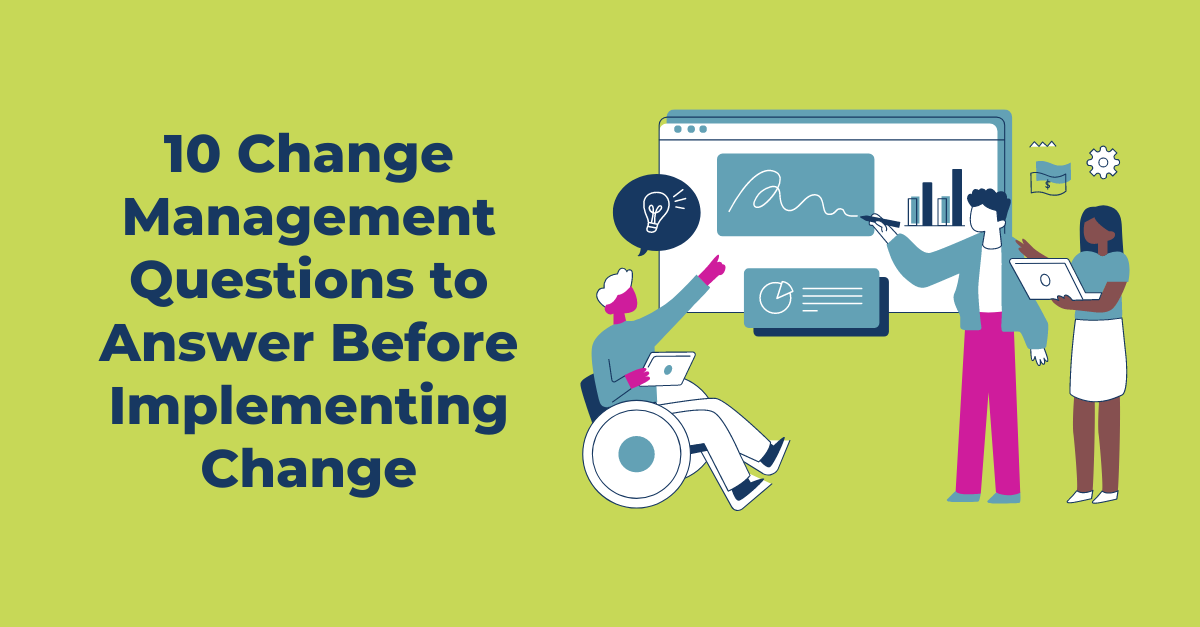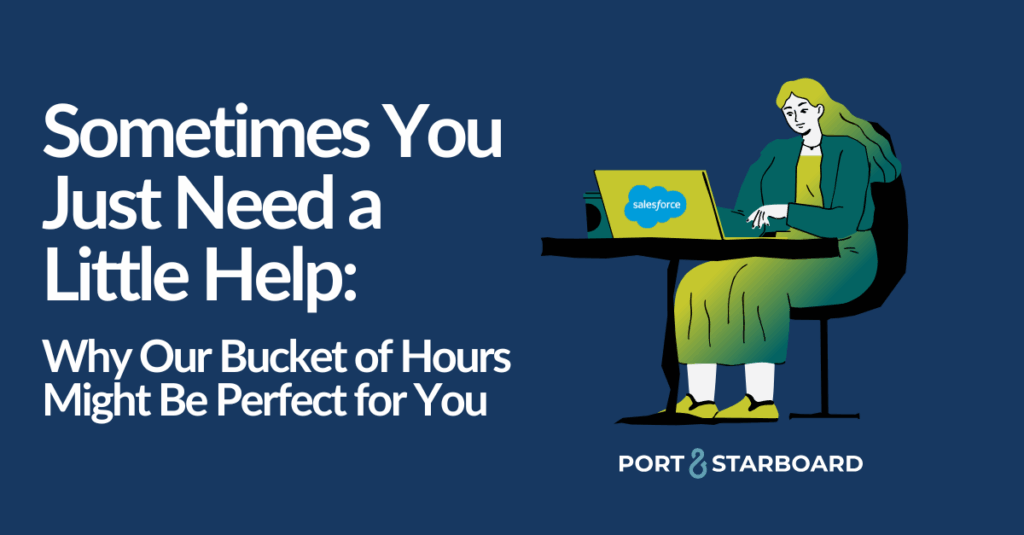If you’re ready to drive change in your organization, don’t forget to consider a significant group: your end users. Being prepared to answer these top 10 change management questions – carefully and thoughtfully – will help you build greater trust and confidence with users. Remember to address both “what” you’re planning to accomplish and the “why” behind upcoming changes.
10 Change Management Questions to Answer for End Users
Preparing thoughtful, honest answers to the following questions will help facilitate a more successful change initiative. Conversely, if you fail to adequately explain what is changing and why, you might face user dissatisfaction, distrust, or even refusal to implement the change.
1. Who or what will this change impact?
Will the change impact your end users directly or indirectly? What about your customers, services or products, workflows, and financial situation?
Be prepared to thoroughly explain what the change will mean to your end users. It may include things like:
- Different ways to perform day-to-day work
- Introducing new technology, tools, systems, or software
- Streamlining processes by automating specific tasks that users previously performed manually
- Opening a new office or moving your workplace to a new geographic location
- Introducing new job roles or changing current roles
- Implementing new processes and workflows
- Entering a new market to expand your business
2. Why is this change necessary now?
End users may wonder why you want to implement the change now rather than later. With as much care and transparency as possible, explain why the change is essential and how it will help your organization and its people.
Thinking through the answer to this question before implementing change will also help stakeholders evaluate if the change is necessary at this time. It will help your business leaders approach the problem you’re hoping to solve more strategically.
Here are some common reasons businesses implement changes when they do:
- They have a chance to gain market share (or may risk losing part of their market share if they don’t enforce change now).
- They’ve discovered a new and exciting opportunity for growth.
- Their current field is evolving, and they must implement change to stay competitive in their market.
Also think through what might happen if you don’t implement change right now. Explaining the probable consequences of avoiding fundamental changes may help you persuade end users and other stakeholders to support your plan.
3. Do I have choices?
It’s also important to relay what choices your end users have (if any) so they can react accordingly. Break down your implementation plan into phases: before, during, and after the change occurs. Then thoughtfully explain how the change will benefit users, the consequences of refusing to implement the change, and the options users have. This gives users a choice and the freedom to make an educated decision.
4. What goals are you hoping to accomplish?
Be sure to explain the high-level goals for your organization to paint a clear picture for end users. Your goals should be clear, concise, and time-based. Use the SMART goal model: specific, measurable, attainable, relevant, and timely. Your goals will guide your strategies.
The faster you want to reach your goals, the more change you will need to implement quickly. If you’re planning on a longer timeline, you can take more time prepping and training users and ensuring they adopt the change effectively. Use your high-level goals and timeline to drive consistent action and make the transition successful.
5. What are the next steps?
After your end users are on board with your plans and understand your high-level goals for change, break down what happens next. This is where you’ll introduce the strategy to accomplish your goals and what role everyone plays in the process. Clarify what you’ll terminate, what you’ll continue, and what you’ll start new. Everyone should understand their individual responsibilities to make the change successful.
6. Who will manage this change?
Who will manage or lead the charge? Define key players and their specific roles in implementing the change. Your change leader may be your CEO, while the managers will likely be team or department leaders who report to the CEO and ensure proper execution.
7. What should I do if I disagree with the changes?
If an end user disagrees with the change or the process of implementing the change, ask them to be patient. Explain, again, why you’re implementing the change and remind them of your long-term vision and goals. Hopefully, this will motivate them to support the changes.
Remember to listen to concerns and determine which of them are valid. Then, if necessary, address them with management to identify a better way forward. Your end users may identify things top management overlooks or can’t see from their vantage point. Objections are often worth investigating.
Your company culture will likely impact how your end users react to change. If your organization rewards change and views it as positive, your users likely will too. If your organization is more traditional and prioritizes stability, you may face more pushback.
8. How long will the change project take?
Refer to your timeline and overarching goals on this one. How long it takes will depend on the size, scope, and urgency of the change and your financial situation. Minor changes may take months, while significant organizational changes could take several years.
9. How can we avoid mistakes along the way?
Likely, your business has tried to implement changes in the past and failed at some point. To avoid future mistakes, remember to be proactive. You won’t always be able to adopt change according to plan. You may face challenges and make mistakes along the way. That’s normal. But anticipating problems and remaining flexible throughout implementation can help you successfully adopt the change.
Be mindful of how your users adapt to the changes you set into motion. Ensure they receive proper training and feel comfortable asking questions along the way. That way, they will be more likely to embrace the changes and avoid falling back into old behaviors they feel more comfortable with.
10. How will supporting this change be beneficial to users?
Your end users may ask you what’s in it for them. How will the changes you’re planning benefit them individually? How can you help them see the positive outcomes you’re working toward and help them understand that it will be advantageous for them in the long run?
Benefits may include greater responsibility, learning new skill sets, more respect among management, or greater personal satisfaction. Communicate the value your changes will create for them both individually and companywide.
Chart Your Course with Port & Starboard
Port & Starboard can help your team successfully implement change, whether building a new website, launching a fresh rebrand, partnering with a fractional CIO, or introducing Salesforce to your organization for the first time. We would love to help you make new processes, systems, or tools work for – not against – your business. Here are three of our top services:
- Salesforce Support: Partner with a full-service team of administrators, developers, and solution architects who will take the time to understand your business and implement or support your Salesforce solution effectively.
- Web Design & Hosting: Optimize your online business potential by redesigning your current site or launching a new one with a talented team of designers.
- Fractional CIO: Gain the support your team needs to confidently manage your technology, data strategy, information security, and more for a fraction of the cost of a full-time CIO.
Contact us to learn how you can increase efficiency across your company, ensure user adoption, boost customer satisfaction, and more.




